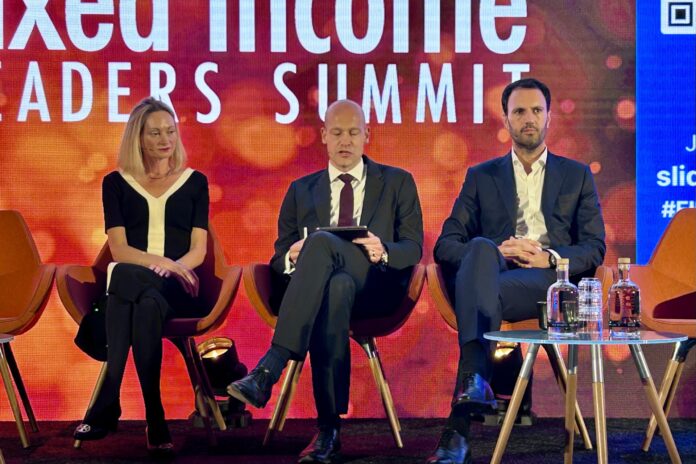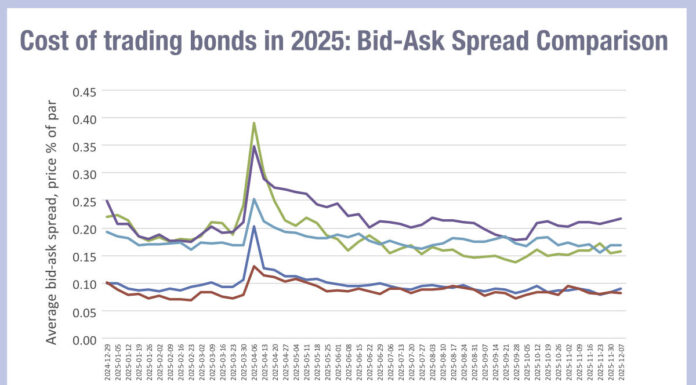Bond markets are electronifying fast in secondary markets and efforts have been made in primary markets too. However, the level of progress was hotly disputed in a debate pitting Cathy Gibson, global head of trading at Ninety One against Olivier Dermaux from S&P Global Markets, one of the two primary technology vendors, the other one being Bonds direct.
“We’ve been talking about upgrading and making [the] primary market electronic since I started my career more than two decades ago. It hasn’t happened—not from a buy-side perspective,” said Gibson.
She added: “The workflow is inefficient… and easy to fix. But there are vested interests… banks and large asset managers are not incentivised to make the buy-side workflow electronic… Any risk to those players being sidelined is too big a threat.”
Gibson added that the lack of interoperability between the two current providers compounds the problem and creates operational risk in buy-side primary workflows. with two dominant order-routing platforms for new issues.
“Having to go to two different providers—with some banks on one and others on the other—that’s [a] non-solution,” she said. She also pointed to “vested interests within buy-side technology providers and the banks,” arguing it’s “naive” to pretend those conflicts do not shape outcomes.
Dermaux countered that “the digital overhaul is underway.” He noted that banks have long used electronic tooling for syndication and documentation.
He said: “Every single syndicated bond over the last 15–20 years has gone through those electronic rails.”
He also noted that on the investor side, the two main platforms now have more than fifteen hundred users with over 50% of the DCM book in a typical European deal sourced electronically.
For Dermaux, the direction of travel is clear: straight-through processing is being stitched together via OMS / EMS integrations.
“If you’re a user of Charles River you can log in and see all the deals”, he said.
That’s not quite the case according to Kristoffer Haugen, lead fixed income trader at Norges Bank IM who told us some deals are just not on either of the electronic platform echoing Gibson’s concerns.
Dermaux advocated that the more the workflow moves on-platform, he added, the more benefits market participants would get from it
Being involved in primary debt markets gives greater access to liquidity and builds relationships with debt syndicates making them critical to how well they perform for investors. While transparency is to be sought, Gibson stressed allocations remain the buy-side’s critical concern.
“New issues are the largest source of alpha generation… allocations are key,” she said.
While both agreed the technology exists; an audience vote showed that Gibson convinced the attendees of the debate that the lack of interoperability and the value to market participants of the status quo will impede primary markets electronification.
©Markets Media Europe 2025










